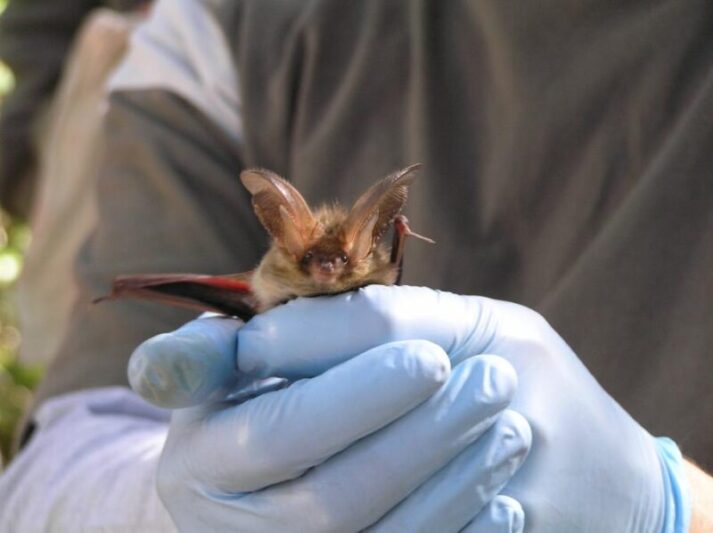Brown long-eared bat

Status
Native and common
Population
934,000
Scientific name
Plecotus auritus
Brown long-eared bats are easy to identify because of their unmistakable ears, which are almost as long as their body. In flight, their ears are held upright, but they curl back like ram’s horns or are tucked under their wings when the bat is at rest. Brown long-eared bats have long grey-brown fur. They emerge from their roosts up to an hour after sunset and often follow linear features such as hedges, streams or fences to and from feeding sites. They fly comparatively slowly, either catching flying insects or picking them off leaves or tree bark. Their flight is very manoeuvrable and they can even hover. Larger prey is sometimes taken to a perch where they are consumed while the bat hangs upside down, leaving piles of insect remains, such as moth wings, on the ground below.
Wingspan: 23 – 28cm
Weight: 6 – 12g
Lifespan: Typically 4 – 5 years
Reproduction
Mating occurs between October and April but fertilisation and development of the embryo are delayed until the following spring. Groups of 10 – 30 females form maternity roosts in late spring and, unlike other species, will share them with males. A single young is born in late June to mid-July and is independent within six weeks.
Diet
Moths, beetles, flies, caddis flies, beetles and earwigs.
Winter roosts
Caves, tunnels, icehouses, cellars and trees. They prefer to hibernate in very cold temperatures, often just above freezing.
Summer roosts
Frequently roost in houses, often in large open roof spaces of older buildings, and in tree holes and bat boxes. Generally roost singly or in small groups.
Habitat
Typically woodland and lowland valleys.
Predators
Domestic cats, owls and kestrels.
Threats
Habitat loss (and the loss of roost sites); and insecticides, which reduce the abundance of prey.
Ultrasound
Brown long eared bats produce very quiet calls between 25 – 50kHz and are often called ‘whispering bats’. The calls can only be heard with a bat detector if the bat is closer than 5m away.
Status and conservation
GB Red List: Least Concern (LC).
Population size and distribution
UK population 934,000. Surveys of hibernation roosts indicate a stable population in recent years. They are widely distributed throughout Britain and Ireland but absent from mountainous regions of northern Scotland and some Scottish islands.
Did you know?
Brown long-eared bats are the second most common bat in Britain. The most common is the pipistrelle.
